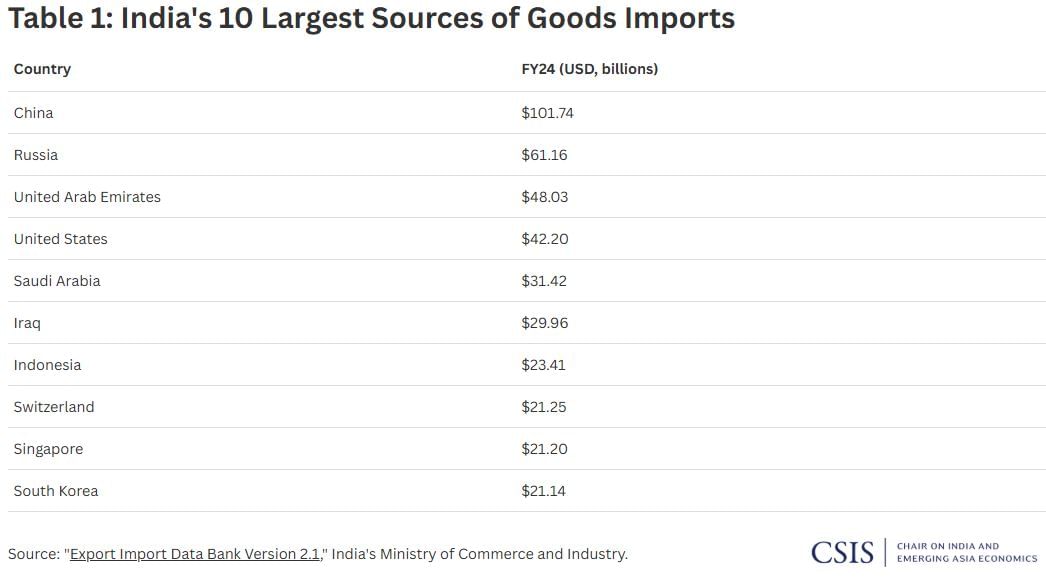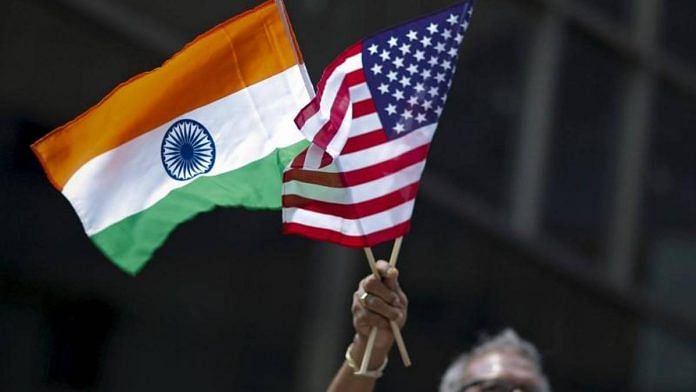A U.S.-India trade agreement is about more than commerce. It is about security. In an effort to push India to cross unreasonable thresholds on agriculture market access, the Trump administration is depleting the reservoir of trust that both nations have painstakingly built over a generation. Notably, the administration’s August 6 executive order adds an additional 25 percent tariff on India in response to India’s purchases of Russian oil. Despite the “doom and gloom” and memories of 1998 and 2013, ties can still be largely repaired if the United States chooses. But this requires a deeper appreciation for India’s true “redlines” on agriculture market access and a consistent approach to Russia. The U.S.-India wider strategic relationship is at serious risk.
I have the fortune of working in a role that balances U.S.-India commercial ties and U.S.-India military ties. The first Trump administration was refreshingly direct in understanding the many linkages between economic and security matters, which typically reside in very different, and largely unconnected, silos within the Washington policy community.
The commercial promise of a trade agreement with India stands on its own merits. India is on the verge of passing both Germany and Japan to become the world’s third-largest economy. India has the largest consumer market in the world—a title it will likely hold in perpetuity. And there are natural complementarities driven by the relative strengths of the United States and India, most notably with India’s dynamic technology services sector.
But this commercial promise of bilateral economic integration is only part of the reason for getting a good deal done fast. If China plans to continue an export-oriented growth strategy well into the future, exporting products to India must be considered a vital goal for the reasons outlined in the preceding paragraph. The related surpluses provide China with the resources required for military modernization and for bankrolling regional infrastructure programs. They also allow Chinese manufacturers to further scale up and drive down production costs—including in sectors with dual-use capabilities such as computers, drones, rare earth magnets, quantum computers, navigation systems, marine vessels, communications infrastructure, robotics, and more. China is already the largest source of India’s imports by a significant margin and, despite measures to slow imports by the Indian government, its share continues to grow, as indicated by Table 1.

India has also been deepening cooperation with the United States in a wider set of strategic undertakings, notably defense cooperation. Beyond joint exercises and growing U.S. sales of military equipment to India, the relationship is breaking important new ground in other ways; for example, India is joining the U.S. Navy-led Combined Forces Maritime Bahrain, there are agreements for Indian shipyards to repair U.S. Navy vessels, and there have been hints of operational coordination during India’s confrontations with China.
Of course, India is not sitting still and is actively working on trade agreements with other countries. Even before President Trump took office, India signed tariff-focused agreements with the United Arab Emirates (February 2022), Australia (April 2022), and the Swiss-led European Free Trade Association (March 2024). More recently, India signed a free trade agreement with the United Kingdom (May 2025). On average, these agreements will allow zero-duty access to the Indian market for over 90 percent of tariff lines. Other negotiations are ongoing. These agreements will provide a boost to manufacturers and help each of these countries reduce trade dependencies on China.
President Trump seems to be attempting to apply extraordinary pressure on India to bend on its trade redlines. The bizarre engagements with Pakistan after the India-Pakistan conflict, as well as new verbal pressure on India over Russian energy purchases, have stoked India’s age-old concerns about the reliability of the United States as a partner. The United States is quickly spending the goodwill it earned during the Biden administration by avoiding a collapse in the relationship over issues like the murder-for-hire case in New York and India’s reluctance to condemn Russia’s invasion of Ukraine. Such incidents would have put relations into a long deep freeze in times past but were downplayed by senior U.S. officials at the time.
Fortunately, despite the dangerous rhetoric and tariffs being thrown at India by the Trump administration on a near-daily basis, Delhi has largely chosen to avoid deepening the fight. While the atmosphere is tense, there is ample opportunity to get back on track. This requires the Trump administration closing out a very good trade agreement without expecting India to commit to tariff steps that put the Modi government on dangerous political footing.
If the United States can cross this first hurdle, both sides will need to consider other confidence-building measures that can be undertaken to refill the “trust reservoir,” which is seriously depleted, and secure a stronger, broader strategic partnership.
This article was originally published on the Center for Strategic and International Studies (CSIS) website.
Richard Rossow is a senior adviser and holds the Chair on India and Emerging Asia Economics at the Center for Strategic and International Studies in Washington, D.C. Views are personal.







How can a country whose leader might be entangled in one of the biggest sexual trafficking crimes of the 21st century, have any moral compass? So many young girls were potentially exploited by Trump-Epstein, it’s chilling when Trump says he is going to charge misdemeanors by 14 year olds in Washington DC as adult crimes. It’s this criminal minded person’s way of saving himself later when it is revealed he was involved in trafficking 16 and 17’year old girls. He can then claim they were adults. Only Epstein was purportedly involved with 12 year olds. It is such a leader who has been elected to top office and is wrecking decades of foreign policy efforts to build ties and bridges with democratic countries like India while striking family and backroom deals on crypto with terror sponsors like Pakistan. America is today a global notoriety that doesn’t have character, moral standing or the good of the world in mind. Its leader just wants the Nobel peace prize. There would be no worth left for that prize if it’s awarded to one of the greatest criminals of the 21st century, who pretends to be the leader of the Free world that pushes struggling people into oblivion. America has totally exposed itself as a neo colonial, immoral and anti-democratic hegemon today than at any other time.